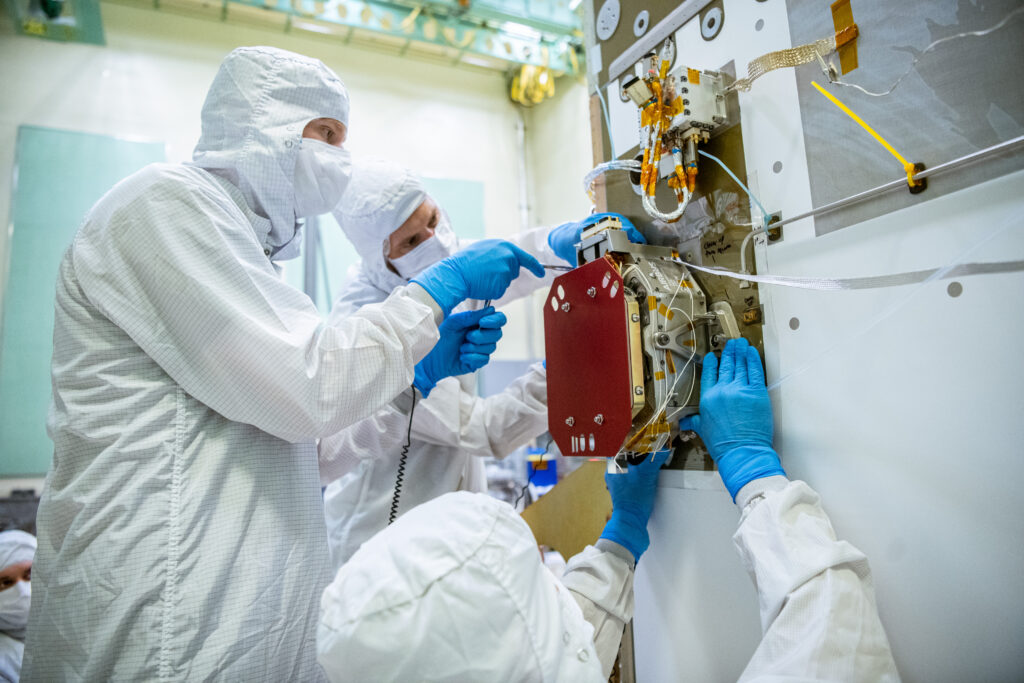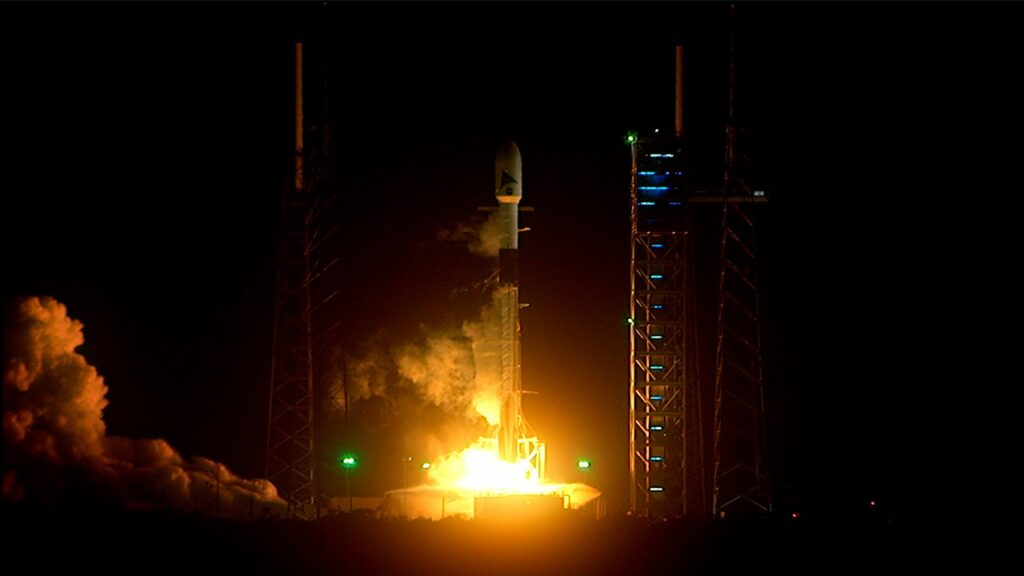NASA’s klimaatsatelliet PACE is in de vroege ochtend van 8 februari succesvol gelanceerd vanaf Cape Canaveral. PACE gaat metingen doen aan aerosolen, plankton en oceaankleur. Aerosolen zijn de grote onbekende in klimaatmodellen. Het Nederlandse instrument SPEXone gaat daar verandering in brengen via metingen aan aerosolen in de atmosfeer. SPEXone is gebouwd door SRON en Airbus Netherlands B.V., met ondersteuning van TNO.
Aerosolen
Aerosolen zijn kleine deeltjes als roet, as en woestijnstof in de atmosfeer. Ze hebben grote invloed op klimaatverandering en luchtvervuiling, maar hun precieze impact is onduidelijk. Hierdoor liggen de scenario’s voor klimaatopwarming voor het jaar 2100 meerdere graden uit elkaar. De meeste aerosolen weerkaatsen licht, waardoor ze een afkoelend effect op de aarde hebben. Maar ze kunnen door absorptie ook een opwarmend effect hebben.
Klimaatmodellen
Het ruimte-instrument SPEXone gaat de eigenschappen van aerosolen bepalen, zoals grootte, samenstelling, vorm en hun absorberend en weerkaatsend vermogen. ‘Zo kunnen we beter in kaart brengen welk fijnstof in de atmosfeer zit en hoe sterk hun effect is op de wereldwijde temperatuur,’ zegt Otto Hasekamp (SRON). ‘Daarmee verkleinen we de marges in klimaatmodellen en kan de wetenschap scherper voorspellen wat er gebeurt gegeven een bepaalde broeikasgasuitstoot.’
Wolkvorming
Aerosolen beïnvloeden het klimaat ook door hun interactie met wolken. Hasekamp: ‘Water kan condenseren op aerosol-deeltjes waardoor wolkendruppels ontstaan. Als er meer aerosolen zijn, zijn er ook meer wolkendruppels en dit zorgt ervoor dat wolken meer licht reflecteren. Dat geeft dus een afkoelend effect’. Niet alle aerosolen zijn even geschikt om een wolkendruppel te vormen. SPEXone geeft hier meer zicht op. Vervolgens kijken de onderzoekers ook naar de relatie tussen de hoeveelheid aerosolen (instrument SPEXone) en de hoeveelheid wolkendruppels (instrument HARP-2) om te bepalen hoe sterk het effect van aerosol op wolken is.

SPEXone
‘SPEXone meet vanuit de ruimte onder maar liefst vijf verschillende hoeken de polarisatie van het zonlicht dat teruggekaatst wordt door de atmosfeer,’ zegt Wencke van der Meulen, business director atmospheric monitoring instruments bij Airbus Netherlands B.V. ‘Uit die metingen leiden we allerlei informatie af over het aanwezige fijnstof, zoals waaruit dat fijnstof bestaat, de grootte en vorm van de deeltjes en of ze licht absorberen of terugkaatsen. Dat levert cruciale informatie op voor klimaatmodellen, die aan de basis liggen van internationaal beleid rond klimaatverandering.’
Consortium
Harm van de Wetering, directeur van het Netherlands Space Office (NSO), is trots op deze Nederlandse bijdrage aan de NASA missie: ‘Dit is een prachtig voorbeeld van samenwerking binnen de Nederlandse ruimtevaartsector en tussen Nederland en Amerika, waar ook NASA enorm enthousiast over is. Hier leveren we met onze Nederlandse technologie weer een belangrijk aandeel aan het klimaatonderzoek. Dit is nuttig, maakt trots en inspireert.’
SPEXone is ontwikkeld door een Nederlands consortium bestaande uit SRON en Airbus Netherlands B.V., daarbij ondersteund door opto-mechanische experts van TNO. SRON en Airbus zijn verantwoordelijk voor het ontwerp, de assemblage en het testen van het instrument. De wetenschappelijke leiding ligt in handen van SRON. TNO heeft de vrij-vorm optiek gebouwd. Het concept achter SPEX is bedacht door Frans Snik (Universiteit Leiden). Het NOVA-lab in Dwingeloo heeft een aantal spiegels gepolijst. SPEXone is een publiek-privaat initiatief dat mogelijk gemaakt is door het NSO met door OCW beschikbaar gestelde middelen en door SRON/NWO-I en ondersteund door private investeringen van Airbus Netherlands B.V.



